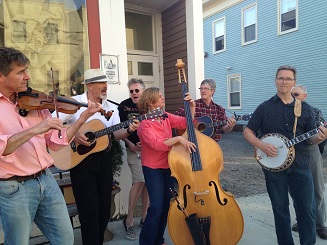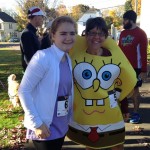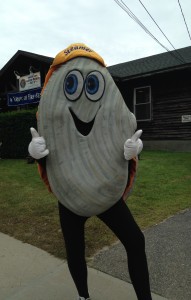Step into this café and step into a world of conversation, cuisine, and creativity.
 How lucky for South Portland, Maine that Jeannie Dunnigan and her wild notion of community relocated to the Knightville neighborhood. There’s no missing Jeannie on any day of the week: she’s the one in roller skates – yes, roller skates from days gone by, not to be confused with roller blades or inline skates. You might see her behind the counter at Cia Cafe, or rolling down the street to see what’s happening in this now-vibrant business community.
How lucky for South Portland, Maine that Jeannie Dunnigan and her wild notion of community relocated to the Knightville neighborhood. There’s no missing Jeannie on any day of the week: she’s the one in roller skates – yes, roller skates from days gone by, not to be confused with roller blades or inline skates. You might see her behind the counter at Cia Cafe, or rolling down the street to see what’s happening in this now-vibrant business community.
Jeannie’s take on things is simple: “Our mission at Cia is to serve our guests the best local coffee, local ice cream and local art work that Maine has to offer! I have always wanted to exhibit fine art in a relaxed and fun setting accessible to all.”
Jeannie invites local artists to be a part of her café – exhibiting their work which, of course, means she is giving them the opportunity to sell their work. Dick Sawyer, a gifted photographer who is also a friend and colleague, recently displayed his photographs at Cia. That’s when I got to see Jeannie’s dream play out: for the opening of the exhibit, she threw a party. Nothing new here – oh, except there was a band, and the band traveled into the street, and then across the street to encourage us to visit and support other shops in Cia’s neighborhood.
 Cia’s model for success is a breath of fresh air. Jeannie, her husband, and son are all involved in the business that draws people in to share a meal, a story, a laugh while appreciating the work of local artists. Food, stories, laughter: that’s what makes the world go ‘round, isn’t it? Thank you Cia for making our world go ‘round and ’round.
Cia’s model for success is a breath of fresh air. Jeannie, her husband, and son are all involved in the business that draws people in to share a meal, a story, a laugh while appreciating the work of local artists. Food, stories, laughter: that’s what makes the world go ‘round, isn’t it? Thank you Cia for making our world go ‘round and ’round.
















